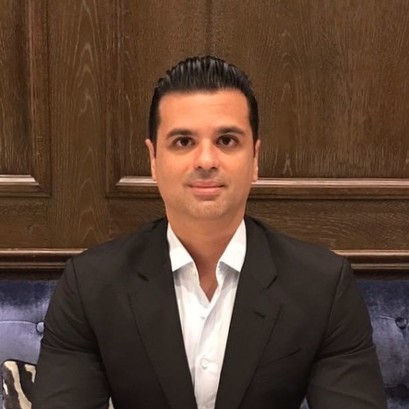A Q&A with Brazilian legal department head Leandro Gonzales about how an Agile organizational structure completely revamped the way his team worked — and led to more team wins
Leandro Gonzales, now head of Legal at the largest private sector bank in Brazil, had a problem. Before 2016, his legal department was in the doldrums: Lawyers didn’t seem to like their jobs, productivity and efficiency were at low levels, and, worse yet, the bank was losing legal cases it had been confident of winning. Something had to change, Gonzales realized.
Now, just five years later, the department is completely reborn: Morale is up, productivity has increased by a stunning 175% and overall costs have dropped by about one-third.
How did he do it? By adopting an Agile organizational structure, Gonzales focused the department on working collaboratively in small autonomous and self-managed teams that plan and work in short cycles to learn quickly and achieve greater results. Gonzales chose Scrum, one of Agile’s methodologies, to manage the department – think of Agile as the philosophy and Scrum as the management method. The cost of lawsuits fell by 75%, and the results transformed into those seen at many prestigious law firms.
Forum sat down with Gonzales to discuss his path to success, how he was able to get reluctant lawyers to go along and how to measure what you want to achieve.
Forum: While it may have seemed obvious to you that things had to change, you also faced challenges with getting buy-in from the rest of the company to pursue these changes. How do you manage a process like this from a cultural shift perspective?
Gonzales: Every cultural change in the workplace brings a great initial challenge that must be overcome, otherwise the change will prove unfeasible. And this challenge is to show everyone that through change, teams will enter the path of success, and that they will reach another level. Those involved need to feel that the change will be good for them, whether they are lawyers or company executives. And the best way to gain skeptics’ support is through early wins that excite because they show that you can achieve unprecedented results – which Agile and Scrum allow you to do – and those early wins allow you to gain traction to continue the change until the end.
Also, people need to feel included, they need to feel part of the change. Communication, therefore, will have to be constant and there will have to be a lot of transparency so that everyone knows exactly what is happening, what is expected and what is being achieved, week after week.
Forum: What was it about the Agile and Scrum methodology that made you think it would work for you?
Gonzales: Clearly, we needed something new. The traditional management model had been applied and the results simply did not come. In fact, we had entered a downward spiral and things only got worse.

I had already been studying Agile and had theoretical knowledge of Scrum. I have always believed that, even though it emerged in the context of IT, Agile could transform a legal department because it was designed for intellectual work, like ours, and its fundamental characteristics – such as transparency, collaboration, autonomy, customer centricity and a sustainable pace – were the missing elements for any legal team.
When I came across our department’s problems, I made an immediate association: We needed a new management model that favors our lawyers and allows them to shine and achieve the high performance desired by everyone. For me, Agile was the answer.
Forum: Were there big adjustments to make to ensure that the Agile and Scrum methodology would work for your department?
Gonzales: Yes, but changing doesn’t always have to mean something costly or painful. In our case, the biggest initial change was moving from an individual way of working to working in teams. Lawyers find it odd at first, but once they see that collaborative work benefits everyone, things flow. Moreover, Scrum has a well-defined cycle, with daily events, and clearly defined roles. This was all new, and we had to adapt and learn a new way of working together. Remember that change is much more behavioral, it is a new way of looking at work.
And different from what most people think, working in an Agile structure does not mean doing the job faster, but doing the right thing, in the right way and at the right speed. This requires a structure that allows you to deal with the complexity of work through empiricism – you learn as you work so that the correct answer can emerge. To achieve this state of empiricism requires you to work differently: For example, you have a small plan for a week, daily inspections and a weekly review.
As it was the first time that a legal team had tried adopting Scrum, we had no one to look up to, which made our learning process even more intense. This forced me, as the person responsible for the adoption, to really reflect on all aspects of how Agile applied to the reality of a legal department. For this reason, we use the short feedback loop to learn to embrace the agility in the best possible way, always with the goal of obtaining better results for everyone.
Forum: What were the early days like?
Gonzales: Very exciting. Our lawyers came from a difficult situation, and executives were tired of waiting for results that weren’t coming. Given that Agile allowed us to quickly move to a favorable scenario, this generated a very positive energy that served to engage everyone in the change. Our lawyers became optimistic and open to changing the way they used to work because they felt it would be good for their careers and that they were responsible for the transformation. Thanks to the quick wins, the executives realized that things were starting to change and gave us all the support we needed, which accelerated the achievement of good results.
The first 12 months were amazing. We started from a totally adverse scenario, full of challenges and achieved unprecedented results working with the same people, but in a different way. Thanks to those early days, we’ve built a great team of teams that work at scale without ever losing agility.
Forum: How did you determine which metrics were the most important to measure and how did you define what “success” looked like for those metrics?
Gonzales: We figured we should just measure what we wanted to achieve. I don’t think we should measure ball possession, for example, we should measure goals and number of victories because we want to win games and championships. So, I decided to measure what I wanted my teams to achieve: engagement, because happy people work better; productivity, because there is no room for inefficiency (but it must be balanced by the success rate, because there is no point in producing too much rapidly if there is no quality); and the cost of every lawsuit conducted, because we had to become sustainable.
With these goals in mind – quality, productivity, success in lawsuits, cost per unit produced and engagement – we were able to routinely inspect our work, decide if we had to make any changes or not, and move forward, always in search of better results and an improved flow. Agile allows you to change quickly to reach your goals – if you know what you want, of course, and are willing to adapt daily.
Forum: What do you consider to be some of the most important achievements by your team?
Gonzales: Well, I believe that achieving differentiation and low cost simultaneously was something unique in legal. And our team achieved this by greatly improving the quality of deliveries and continuously increasing our speed. We broke with the “volume of deliveries or quality” dilemma that exists in legal and created a blue ocean strategy: low cost and high quality, simultaneously.
After a few years, and gradually moving upmarket, our team manages to perform with the quality of a top-tier law firm but at the cost of a high-volume and low-cost law firm. And we achieved this by only changing the way we work, not the people. The new management model proved to be a disruptive innovation – and for me, this is our biggest achievement.






